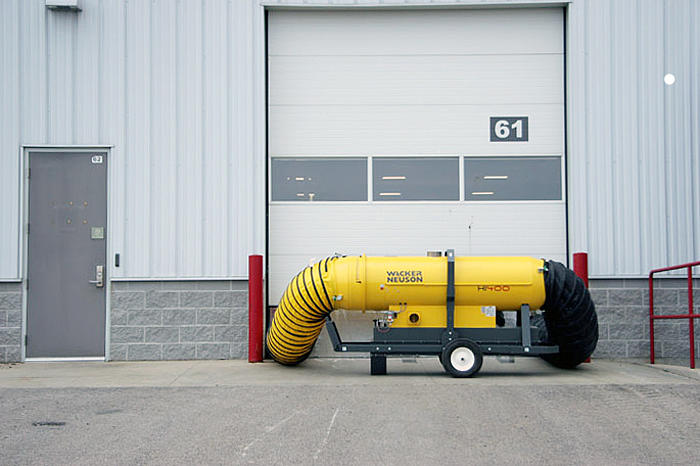If construction sites were likened to Superman, moisture would be its Kryptonite. Humid working conditions provide a host of problems for construction sites. Excessive moisture causes mold, rot, and negative air quality. When left untreated, this overload of moisture could even cause health problems for exposed individuals.
Psychrometrics investigates the correlation between gas and vapor properties. These scientific studies are used to determine the amount of moisture in the air using a thermodynamic algorithm. Once the moisture to air ratio is calculated, professional contractors are able to determine the needs of the build. Moisture moves about the atmosphere from high to low areas of vapor pressure. By adjusting the vapor pressure lower than the objects inside the building, moisture will be released which results in what experts call, “positive air movement.”
In order to tackle this problem, contractors utilize two common solutions: dehumidifiers and heaters. Despite their striking similarities, these two units work to combat moisture in dramatically different ways. If you are undergoing a heavy duty construction project, and are in desperate need of some guidance. Let’s consider the characteristics of both the dehumidifier and the heater. By doing so, you can make an adequate decision with regards to which unit to use.
Dehumidifiers for Drying
Dehumidifiers specifically operate to eliminate humidity in a controlled space. This machine cools the air using a particular refrigerant that works in conjunction with air vapor levels. By lowering the indoor temperature to below the standard dew point, it makes it difficult for air to remain in the atmosphere. When the vapor consolidates, the humidifier works to absorb the water and drain it. Smaller, portable humidifiers need to be drained frequently in order to make room for optimal flow.
Unique humidifiers called desiccants actually attract the water vapor as it is being circulated. The excess water is then discharged through the exhaust of the unit. Despite the type of humidifier, the end goal is the same: the lower the temperature to essentially decrease vapor pressure to create dry, positive air.
Heaters for Drying
Heaters work quite different than humidifiers. As opposed to cooling the air, heaters push the air over a heating device (located within the unit) to raise the room temperature. When a room is heated to a particular temperature, the perception of moisture drops. Although the moisture in the air appears to be gone, heaters don’t eliminate all traces of moisture. Instead, mold and other harmful bacteria are still able to grow because moisture is still present. However, higher heat helps some wet products dry faster.
If you are seeking to eliminate only traces of moisture from the environment, a heater would be a valuable option. However, dehumidifiers generally remove all traces of moisture and essentially cleanse the air. This comparison of products is applicable to any substance that requires drying. That can include paint, glue, plaster, and stains. Since components that are still wet can cause great damage to a site, it’s imperative that you consider the needs of your project and choose wisely. Using specific appliances for climate control can make a tremendous difference in the success of a build.

